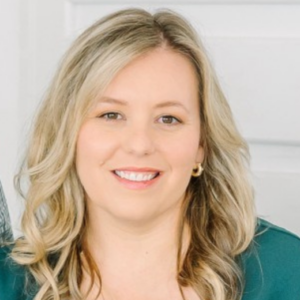Breast cancer is the second most common cancer in women in the U.S. (skin cancers are first), accounting for around 30% of all new female cancers yearly.1 And 2025 will be no exception. The American Cancer Society estimates nearly 317,000 new cases of invasive breast cancer and about 59,000 new cases of ductal carcinoma in situ (DCIS), with more than 42,000 estimated deaths.1
So, how are these cancers detected? The majority of breast cancer in the U.S. is diagnosed following an abnormal screening.
Historically, mammography involved two, 2D views of each breast. While mammography is still a trusted method for both screening and diagnostic purposes in detecting breast malignancies, tomosynthesis is now the dominant model for both screening and diagnostic exams. With tomosynthesis, several angles are viewed around the breast to help see around dense breast tissue, making it more time-consuming, yet more effective, than traditional 2D mammography.
As with all imaging tests, some malignancies may not be detected, even by expert readers. And some benign findings may be mistaken for malignancies, leading to unnecessary additional tests and stress for patients.
That’s why Aidoc has partnered with ScreenPoint Medical to offer Transpara for breast imaging solutions, providing a transformative approach to AI breast cancer detection and diagnosis.
About Aidoc and Transpara by Screenpoint
Transpara is fully integrated into existing radiology workflows through Aidoc’s aiOS™ platform and desktop application, enabling advanced orchestration techniques and providing a unified interface for all AI results. This breast AI supports screening and diagnostic evaluations for 2D mammograms and tomosynthesis (also known as 3D mammograms).
Transpara: Clinical Evidence
Transpara’s efficacy has been shown in a variety of research studies, from small sample size studies to one of the largest high-rigor studies conducted on AI.
- Transpara is uniquely studied.
Transpara is the first and only breast AI to be studied in a randomized controlled trial.³
- With Transpara, 29% more cancers were found.
In the Mammography Screening with Artificial Intelligence (MASAI) trial, 105,934 women were randomly assigned to the intervention or control group. Nineteen women were excluded from the analysis. They found that with Transpara, 29% more cancers were found.3
- Substantial time savings reported with Transpara.
In a U.S. study using tomosynthesis, readers reported substantial time savings — particularly on low risk cases.⁴ And in another study, Transpara performed consistently regardless of dense breast tissue — the tissue which makes it hardest for radiologists to read.⁵
This AI-assisted breast cancer screening tool is becoming a standard of care with higher rates of cancer detection, faster and more efficient reading¹²³⁴⁵ as well as the peace of mind that comes with confident readings, regardless of tissue density.
Transpara: Capabilities and Screening Recommendations
Transpara is FDA cleared for detection, and when a lesion is identified, it discreetly notifies the reading radiologist through the workflow-enhanced application. For cases with risk at or above typical population risk, Transpara will mark up to two areas of concern per breast and assign an overall exam score based on the highest area of concern.
Transpara identifies soft-tissue lesions and calcifications, assigning a score to both regions and the exam as a whole representing the likelihood of malignancies.* Transpara also provides an overall exam score when nothing is detected. The low category score is important in ruling out low risk exams, and has been shown to save approximately 26% of radiologist time when reading tomosynthesis studies.2
Breast cancer screening is recommended for women aged 40-74 with average risk, according to the United States Preventative Services Task Force (USPSTF) recommendations for 2024. While the USPSTF recommends biennial screening, many insurance plans recognize the benefits of early detection and offer annual screening coverage.
Powering a Unified Healthcare AI Experience
Aidoc’s partnership with ScreenPoint underscores a commitment to collaboration that ensures healthcare organizations can access the most advanced AI-driven solutions from a single, unified platform.
With 18 FDA-cleared algorithms and numerous strategic partnerships with leading developers, Aidoc’s vendor-neutral aiOS™ enables seamless integration of both Aidoc and third-party algorithms — delivering a coordinated, end-to-end AI ecosystem. By unifying technology across the enterprise,
Interested in being part of the future of radiology?
Find out how Aidoc and Screenpoint can help.
*Transpara isn’t designed to detect abnormalities on synthetic, stereostatic, spot compressed or other diagnostic/non-standard views. It’s also not designed to process views that contain implants, a pacemaker or internal breast markers.
Citations
- American Cancer Society. https://www.cancer.org/cancer/types/breast-cancer/about/how-common-is-breast-cancer.html
- van Winkel, S.L., Rodríguez-Ruiz, A., Appelman, L. et al. Impact of artificial intelligence support on accuracy and reading time in breast tomosynthesis image interpretation: a multi-reader multi-case study. Eur Radiol 31, 8682–8691 (2021).
- Hernstrom, V., Josefsson, V., Sartor, H., Schmidt, D., Larsson, A., Hofvid, S., et al. (2025). Screening performance and characteristics of breast cancer detected in the Mammography Screening with Artificial Intelligence trial (MASAI): a randomised, controlled, parallel-group, non-inferiority, single-blinded, screening accuracy study. The Lancet Digital Health https://www.thelancet.com/journals/landig/article/PIIS2589-7500(24)00267-X/fulltext
- van Winkel, S.L., Rodríguez-Ruiz, A., Appelman, L. et al. Impact of artificial intelligence support on accuracy and reading time in breast tomosynthesis image interpretation: a multi-reader multi-case study. Eur Radiol 31, 8682–8691 (2021). https://doi.org/10.1007/s00330-021-07992-w
- Koch, H.W., Larsen, M., Bartsch, H. et al. Artificial intelligence in BreastScreen Norway: a retrospective analysis of a cancer-enriched sample including 1254 breast cancer cases. Eur Radiol 33, 3735–3743 (2023).





